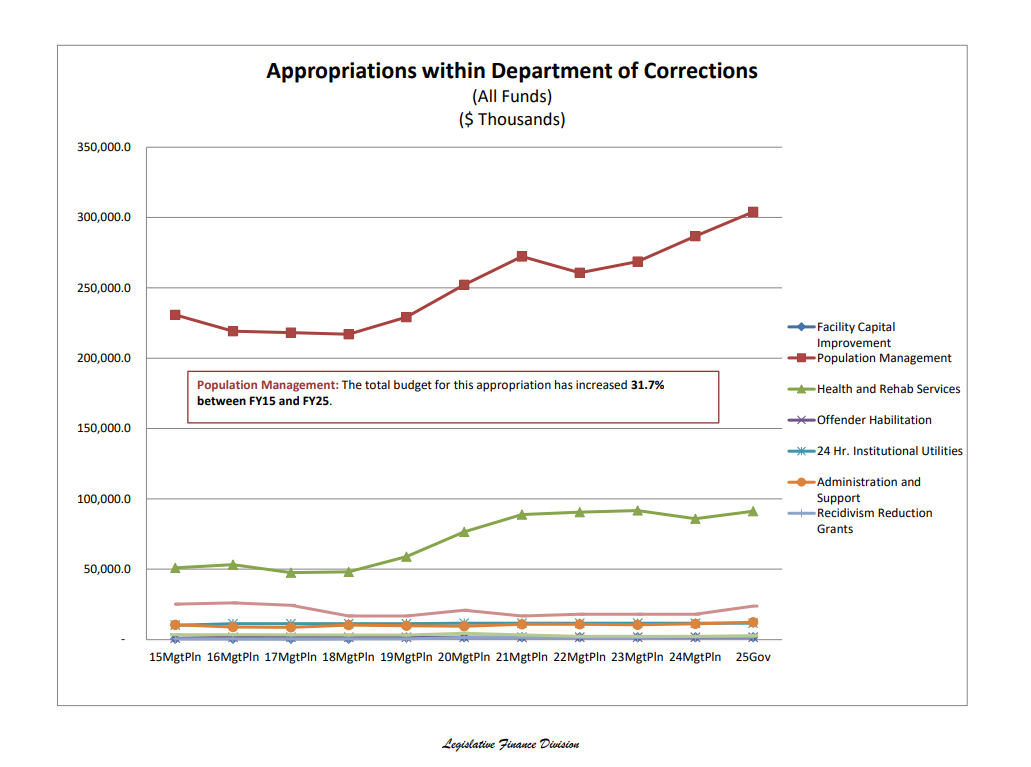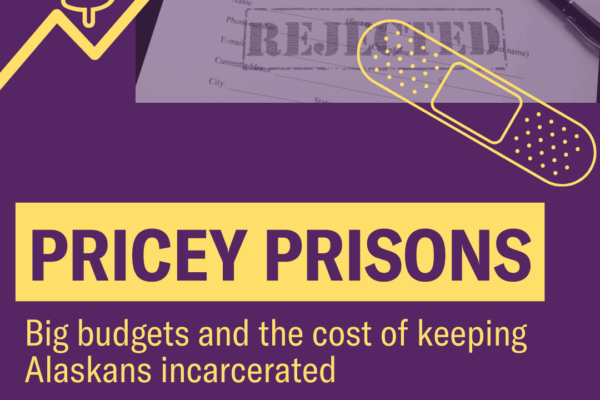When Governor Mike Dunleavy showed us his budget, he showed us his priorities. In a proposed budget he provided to the Alaska Legislature at the end of 2023, he included $450.6 million to the Alaska Department of Corrections (DOC), which has seen consistent growth for several years with little oversight and outcomes that have not actually made Alaska safer.
Alaska has an incarceration rate of 718 per 100,000 people (including prisons, jails, immigration detention, and juvenile justice facilities), meaning that it locks up a higher percentage of its people than any democratic country on earth. Seventy-one percent of Alaskans have or know someone who has interacted with the criminal legal system. Currently, there are roughly 5,000 people in prisons and jails across Alaska and thousands more on electronic monitoring, on parole and/or probation, or residing in halfway houses.
According to DOC, for every day someone is housed in a state jail or prison, the cost of care is about $202 dollars per day. However, this does not include medical care for chronic diseases, end-of-life, or emergency care. This figure is up from 2018 when the daily cost was about $160 for each person.
These rising costs are reflected in DOC's budget growth. At the beginning of 2024, Alaska’s Governor Michael Dunleavy announced a proposed state budget, which included $450.6 million for the Department of Corrections (DOC). Since FY 15 and FY 25, DOC’s budget has grown by $110.9 million, at an average annual growth rate of 3.2%.

Source: DOC FY25 Gov Budget History Graphs, Legislative Finance Division.
However, there are systemic changes that could bring the financial cost of incarceration down for the state – like parole.
Parole is a pillar of the criminal legal system that serves a rehabilitative purpose. When granted to incarcerated people who have served a portion of their sentence and demonstrated rehabilitation, parole increases the ability for Alaskans to financially and physically support their families and community. The result of parole is lower costs to taxpayers, all while lowering recidivism rates and contributing to safer communities, both in and out of prison.
At the end of January, DOC Commissioner Jennifer Winkleman spoke before the House Community and Regional Affairs Committee of the Alaska legislature. She explicitly stated that staff wellness was a top priority for DOC. Institutions are safer for incarcerated Alaskans and DOC staff when parole is an achievable goal, and when people who are eligible know that taking positive steps in rehabilitation will realistically improve their chances of being granted release.
While parole is a promise that leads to safer and smaller prisons, the Alaska Board of Parole has released 79% fewer people and is holding 75% fewer hearings than before the pandemic. For many incarcerated Alaskans who have had a strong institutional record and have completed extensive rehabilitative programming while serving their time, being denied parole diminishes hope and takes away an important incentive for good behavior while incarcerated.
An aging prison population means greater costs
Alaska’s inmates are aging. During the past decade, the number of people 55 and older incarcerated in the state has increased by 50 percent, according to data from DOC. Alaska’s spending on physical health care for prisoners increased 97 percent during the past decade, from about $31.5 million in 2012 to $62.2 million in 2023. In a 2023 Anchorage Daily News article, Commissioner Winkelman stated, “The aging, fragile population drives our budget. It’s huge.”
To combat the growing prison population of older adults, the State has implemented two additional types of parole, medical parole and geriatric parole.
Geriatric parole is for individuals who are 60 and older and have served at least 10 years of their sentence. Medical parole is for individuals who are diagnosed with a severe medical or cognitive disability after they are sentenced for a crime and, because of their condition, will not pose a threat of harm to the public if released on parole. The medical condition must also be unlikely to improve over the entire period of medical parole or likely to result in death.
In 2023, zero people initiated the application process for medical or geriatric parole. Zero were granted parole from ongoing applications. For medical parole, the Parole Board must determine that a person's required care, treatment, and supervision can be provided in a more medically appropriate or cost-effective way than by DOC. For geriatric parole, DOC is not required to proactively work with incarcerated people who qualify for geriatric parole to apply.
While both medical and geriatric parole require additional assessment work by DOC and the Board, reviewing and granting eligible applicants' parole could assist with skyrocketing costs associated with an older and sicker prison population.
The Alaska Board of Parole plays a critical role in assessing an incarcerated person’s ability to be successful, safe, and productive members of our communities after incarceration. The Board plays a critical role in assessing if an incarcerated person’s medical treatment can and should be provided by DOC. The Board has the power to grant parole to eligible people, leading to safer prisons for staff and incarcerated Alaskans.
Parole Board reform is the responsible move for Alaska
It’s the job of the Board of Parole to thoroughly assess an incarcerated person’s ability to live safely and productively in society. The Board of Parole must have members with diverse professional backgrounds who can assess, with impartiality, a parole applicant’s ability to be successful in the community.
Currently, nearly all Alaska Board of Parole members have a corrections background. We support reform for the Board of Parole that would include a member with expertise in mental health, substance use and recovery, someone who has been a victim of a crime, a formerly incarcerated person, and a tribal member. We have the opportunity to implement reforms that not only make life better for Alaskans but save our state money at a critical time.

